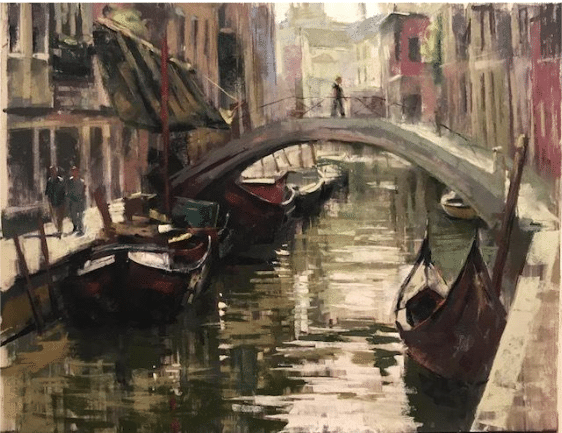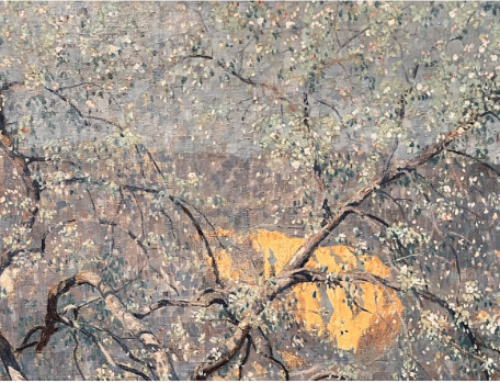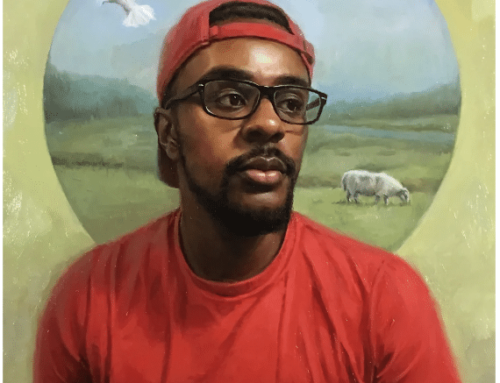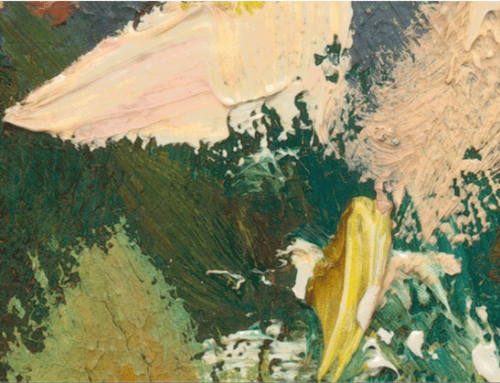Several populous cities in the United States and Europe have announced a coordinated effort to discourage plein air painting in urban settings, citing safety concerns and “an abundance of caution.”
“We are acting to quell any apprehension from members of the public, including that resulting from potential photos that might attract negative comments on social media,” said Pleasantville Mayor Susan Prudent. “It was thought important to act preemptively. We must protect members of the public who might express feeling discomfort over a potentially divisive concept. Not to mention attracting negative publicity damaging to our seasonal tourism’s bottom line.”
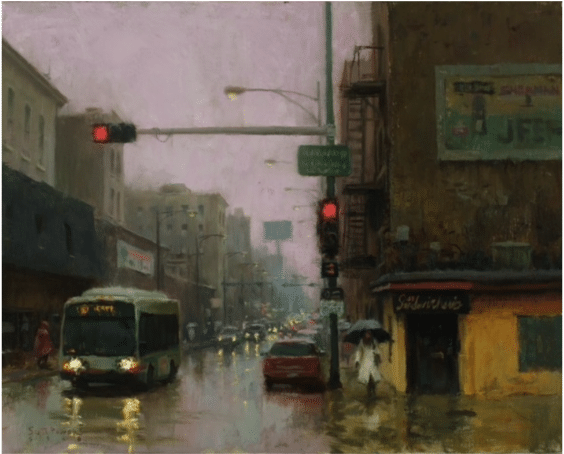
Scott Powers, Urban Reflections, oil on canvas, 16” x 20”
Artists have been asked to relocate curbside easels on the grounds that the “crowds” they draw could obstruct pedestrian movement in congested urban centers. Several legislative bodies have authorized citations for non-compliance, including city counsels in such “picturesque” settings as Santa Fe, Chicago, New York, San Francisco, and a small town in Maine featuring lobster traps, fish-netting, and a colorful assortment of lobster buoys hanging on the wall of a cute little shack.
Urban plein air painting has expanded dramatically in popularity over the previous few years to the point that it has attracted the attention of authorities. “Passersby tend to stop out of curiosity and just stare and say, “wow” inconveniently in the way of busy people trying to get to work on time,” said Arnold Komplainte from the City Office of Planning and Development in Boise, Idaho.
“These artists are a menace,” Komplainte said. “They set up these flimsy wooden contraptions surrounded by … stuff. They come with bags and bags of gear, fancy equipment, rolls of paper towels, tubes of paint and brushes and panels and water bottles, wide-brimmed hats and who knows what else….”
“We can’t have traffic stopping like this, people pulling over to throw wads of money and credit cards out of their windows at these wackos, all the while people with JOBS and shopping bags and dogs not knowing what to do … I mean, look, we’re trying to run a city here!”
Today’s April Fool’s Day edition of Inside Art features urban plein air paintings by two masters with outstanding teaching videos – in order of appearance:
‘The Painted City’ on View in Santa Fe
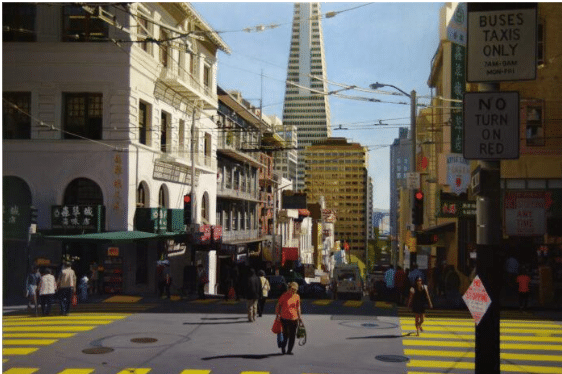
Seth Tane, “Stockton & Clay S.F.,” 2011, oil on panel, 47.5 x 71.25 in.
LewAllen Galleries is presenting a survey of works titled “The Painted City” by noted realist painter Seth Tane. The exhibition includes extraordinary urban scenes inspired by Tane’s intimate links to New York City, San Francisco, and aspects of other environments that Tane has personally experienced over a career of more than fifty years.
“The Painted City” is on view through April 20, 2024, at LewAllen Galleries in Santa Fe, New Mexico.
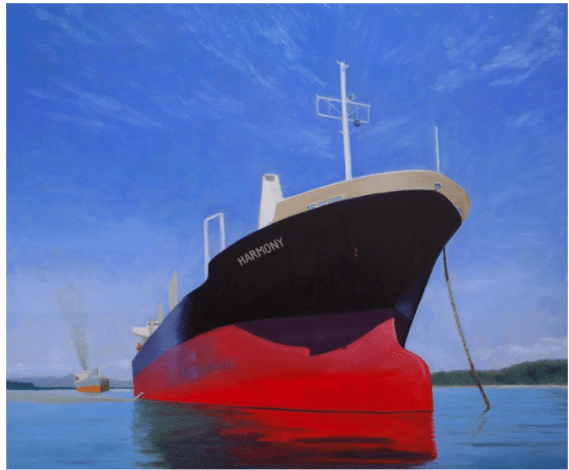
Seth Tane, “Harmony,” 2007, oil on panel, 20 x 24 in.
More from the gallery:
Tane is an experience-based realist painter who shares his observations of the world in his art relating it with exquisite technical proficiency in the most exquisite of detail. About his vision and artistic background Tane states:
“My origins are in NYC, but I was bound for the West Coast as soon as I could get there…making paintings of industrial and urban scenes while enjoying a wild ride of a life on land and at sea. My hands-on experiences in a world I find visually fascinating drives my desire to create detailed paintings of ships, trains, bridges, and industry. My gradual return to residency in NYC has renewed a fascination with the global mix of people that surround me as I live in and travel throughout the city. The crowds and faces, the clothes and things transported, that 24/7 intensity in contrast with the views I find at the deserted margins, all make for endless inspiration.”
In these works, Tane shares with the viewer personal explorations of places he has lived, painting scenes of busy subway stations, bustling city sidewalks, as well as shipyards and railroads, evoking sensations akin to peering through a dreamlike aura or recalling a vivid memory.
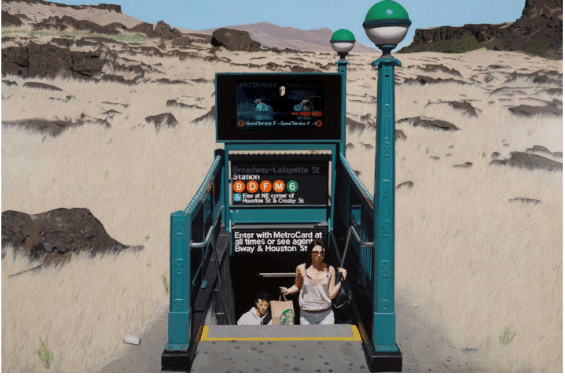
Seth Tane, “Lost Stop,” 2013, oil on panel, 48 x 72 in.
Other of Tane’s paintings offer a blend of his meticulously detailed realism with an occasional touch of the surreal, as he places unlikely subway station entrances into desert landscapes, or a mossy, rock-lined creek over the tracks of a subway train seen in “Miller Creek Local.”
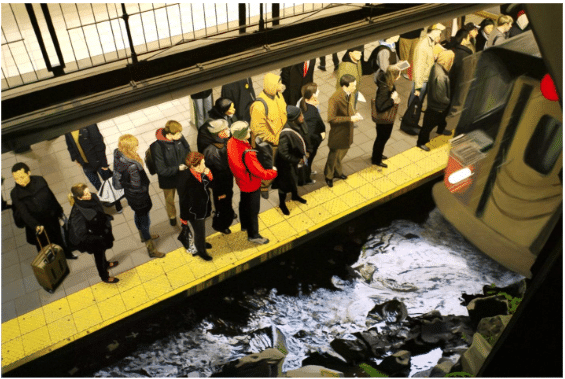
Seth Tane, “Miller Creek Local,” 2023, oil on panel, 24 x 36 in.
Tane counts as his influences the work of artists Edward Hopper, George Bellows, and the early 20th century Ashcan School painters. Tane’s “Canal & Lafayette” is reminiscent of Bellow’s staccato rhythms of color found in his paintings of New York City.
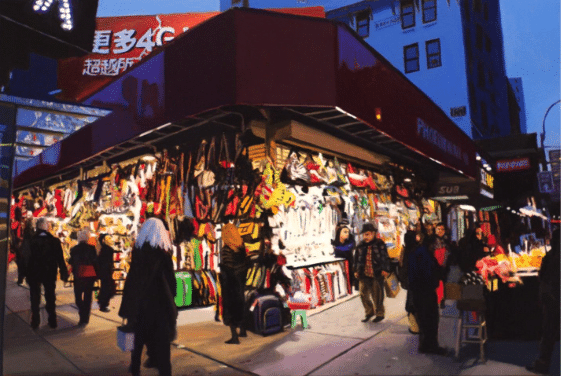
Seth Tane, “Canal & Lafayette,” 2016, oil on panel, 6.75 x 10 in.
Tane studied at the Rhode Island School of Design and has exhibited his work in over 50 group and solo exhibitions, including the Louis K. Meisel and Bernaducci-Meisel Galleries in New York, and the Modernism Gallery in San Francisco. Tane’s work was acknowledged in 2020 with his award of a Pollock-Krasner Foundation Grant.
Born in New York City in 1953, Seth Tane works in New York City on a self-elevating vessel used in offshore mineral exploration, known as a liftboat, which he uses as a residence and studio on the Hudson River.
Visit the gallery’s website at lewallengalleries.com.

